Frank Armstrong
Member Spotlight - June 2020
Frank Armstrong is as passionate about making pictures now, as the day he picked up a camera over sixty years ago. Stationed in the remote Aleutian Islands in Alaska as a young Navy sailor, Frank was eager to share this new world with his family and friends back home in East Texas. He quickly discovered photos were the way to do it. Armed with an Argus C3 and access to a darkroom, Frank began photographing the islands and making prints. A love affair with the world of photography ensued. Frank returned to Texas and attended the University of Texas at Austin as a journalism major. He worked for UT as a photographic supervisor for Texas Student Publications, as the chief photographer for the UT News and Information Service, as well as taught photojournalism classes for the Department of Journalism before embarking on a personal photographic journey that took him back to Alaska and all across the U.S.
In 1983 Frank moved to the east coast with his wife and young daughter, first to Philadelphia, Pennsylvania, then Worcester, Massachusetts, where he now resides. Frank has been teaching analog and digital photography at Clark University in Worcester since 1999 and actively exhibits his work throughout the country.
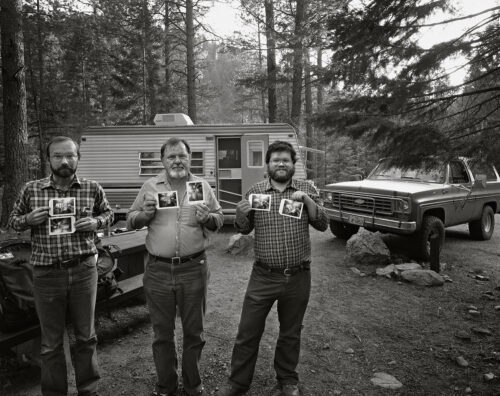
- When did you starting building your own portfolio?
When you are working for someone else and getting paid for it, they tell you who, what, when and where to photograph. I took a lot of mugshots back then [at UT in the 1970s] - two and three a day - for yearbooks, campus magazines and advertisements. You know, "grip and grin" photos. After a while I got kind of tired of it. A few of us, including friends from the arts community and grad program, just started going out on weekends, about 50 - 60 miles outside of Austin, to photograph whatever we saw in the little towns and along the roadsides. Roy Flukinger [TPS co-founder] was part of that group. We would be gone all day long, stopping for barbeque at lunch. We ate a lot of Texas barbeque on those road trips.
It got to be where we were photographing stuff that was being forgotten - old buildings, signs, remnants and such - from yesteryear. Not the glitzy, "aluminum siding revolution" kind of structures but rather what had been left behind. These places had a certain dignity. We called them "social landscapes" - photos that depicted what people were doing in and to the landscape, their interactions with it, but without the people. I kind of got hooked on that idea and it has been an interest and a subject matter of mine to this day.
I do photograph people from time to time and and I still like the west coast traditional landscape - the Ansel Adams' grand vista.
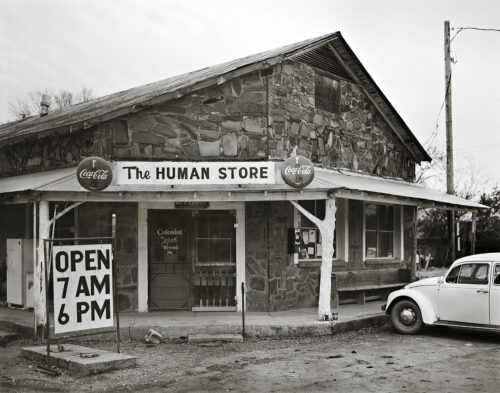

- From whom do you find inspiration or motivation for your work? / Do you have a mentor?
Oliver Gagliani was a well known west coast photographer and teacher and I was inspired to make photos like he did. I took a workshop from him in 1980. He liked the work I was doing well enough and asked me to come back and assist. I returned later that summer and six more after that, as his assistant and workshop teacher. He taught me a great deal. There are others. Russell Lee was a big mentor of mine. He was teaching in the art department at UT when I was teaching in the journalism department. Garry Winogrand - I knew him when he was teaching at UT - we used to have lunch together every Friday. He coached me about how to photograph people. The heroic photo landscapists were also mentors of mine because that is how I learned to look at the landscape.
Every student that I have had for more than one semester has enlightened me. At Clark University I am interacting with people that are three generations younger than me. They are just becoming adults. They have a different perspective and make new explorations that I would have never considered. I find that deeply inspiring. No one has a lock on how to see the world.
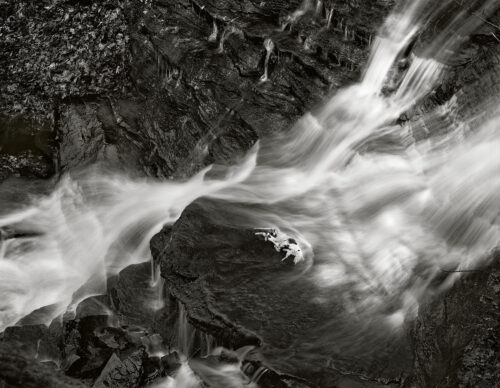
- What is your working process?
I own three [digital] cameras. My primary one is the Pentax 645Z, a medium format, 51 megapixel camera. I love those big files! The amount of detail the camera can record is just phenomenal. However, it is heavy. My Canon 6D Mark II sits next to me in my truck as I drive around, often with a 24-105mm lens on it. I also have a Canon EOS M6, which is a smaller mirrorless camera. Sometimes I stick it in my pocket. I also use my phone.
I don't shoot film anymore - haven't done it in ten years and don't even own a film camera now. I don't miss the darkroom. I can make beautiful black and white prints with my digital cameras and printer. My purpose is to present the viewer with some measure of the feeling and vision I had when I took the picture. I have a specific flow in Photoshop that I use and teach students - a very simple process, nothing fancy. I am only using Photoshop to print an image that is the most meaningful representation of the image.
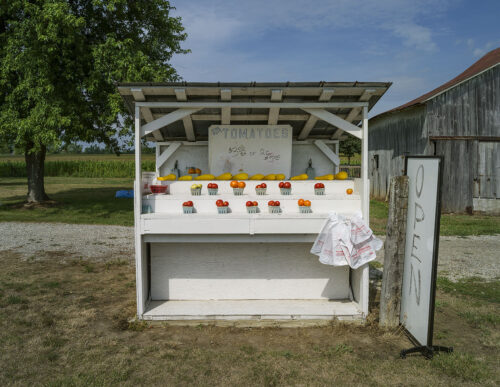

- Are you still challenged by anything photographically?
When I was curious about photographing B&W in the mid 70s, I taught myself the Zone System [a technique for determining correct exposure, developed by Ansel Adams and Fred Archer.] I used Zone extensively in the 80s during workshops I attended and taught. Many people consider Zone antiquated, but it's not. It teaches you certain disciplines and you can apply those disciplines in the digital world.
I can pretty well photograph anything I want to, the way I want to. I don't walk up to something and don't know what to do with it. That being said, every photograph I make is a challenge in some ways, but I have the background, knowledge and experience to solve any issues.
The challenges for me these days are more physical than photographic. Age is creeping up on me. However, my pictures are better. I see with stronger compositions and meaning and narrative. My photographs are more deliberate. I don't have to chase them.

- What's on your bucket list to capture?
I don't want to make the same pictures that everyone else is making. I don't aspire to shoot locations that everyone photographs - all of the photos look the same to me. What I want to do is experience the places I haven't experienced before. I'm not keen on going overseas - there are so many things in the continental U.S. and Alaska that I haven't photographed yet.
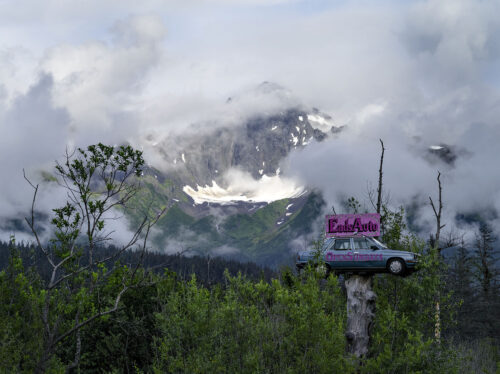
I'd like to get back to the west coast. Out west, like West Texas, New Mexico, Arizona and Colorado, the horizons are a great distance from you. There are certain places where you can see 150 miles out. The great sky and landscape, the less traveled highways - that is what draws me back to the west. During past summers I've spent many weeks on the road with my trailer. I park the trailer at a campground and wander around, free to take photographs of whatever I want.
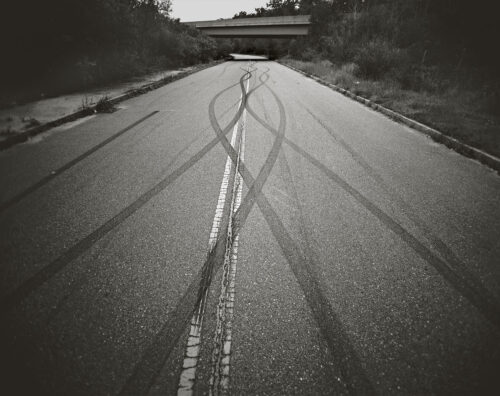
- What work are you most proud of?
When you build a body of work and somebody recognizes it, that's a big deal. My book, Rock, River & Thorn, The Big Bend of the Rio Grande, published in 2001 by Waterous & Co., validated 25 years of work. Roy Flukinger wrote the text for it. I have also self-published two catalogs of my work and together those volumes have 700 images in total. The galleries that represent me, Stephen L. Clark Gallery, Austin, TX and Gallery Kayafas, Boston, MA have copies of the catalogs.

Next spring of 2021 I am having a major solo exhibition at the Fitchburg Art Museum, Fitchburg, MA. I will probably hang 50 images selected from the last eight years of color work. Some prints will be very large depending on the subject matter. Additionally, the exhibition will include work and statements from six to eight students who I was responsible for mentoring.
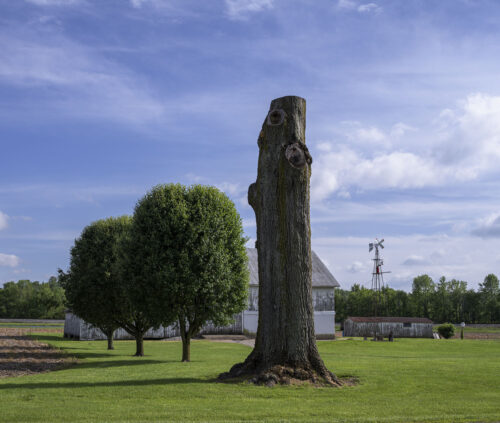
- What words of wisdom do you tell your students or other photographers?
Elliott Erwitt, a documentary photographer, said it best, "To me, photography is an art of observation. It's about finding something interesting in an ordinary place... I've found it has little to do with the things you see and everything to do with the way you see them." In other words, it is not what you photograph, it is how you see what you photograph. And that's an individual statement about what you are looking at.
I tell my students, when they are viewing the world through their camera, they have to understand that every object they allow to be in the frame is related to every other object in the frame, and they are responsible for the relationship. Everything in the frame should be meaningful. As soon as they push the button and fire the shutter, the picture becomes a narrative AND a memory at the same time.
Why do we photograph? Why do we make art? I'm not sure I know all of the answers entirely but I know photography gives me great pleasure and solace, and makes me feel like I have accomplished something. When I stop and look at what is before me, I ask, why did I stop to make that picture? The print is the final expression of the answer to that question.
Photography literally allows me to relate to the world I am living in. At times the world goes by too fast. But if I can stop the world for a second, hold the image in my hand and examine it, then I can begin to understand it.
